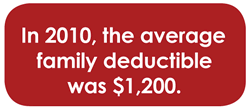
Denial Management as Turnkey Strategy

THE BOTTOM LINE IS THAT PRACTICES CAN EXPECT TO LOSE 20-25% IN REVENUE COLLECTION EACH YEAR.
As the New Year begins, provider practices and hospitals assess the previous year’s profitability as it holds implications for this year’s financial performance. This assessment provides a great opportunity to put forth a strategy that will lead to increased revenue, not just in the near-term but the long-term as well.
A practice that generates $1 million can expect to collect $750,000 during a good year. One significant contributor to loss is the lack of a comprehensive denial management and follow-up strategy that addresses the many onerous collection issues (such as reimbursement policies, under-payments, rates and payment delays) that are at play once a claim is submitted. The high number of potential issues requires that practices have a robust approach that can track and analyze denial rationales to identify rejection patterns and discover opportunities to recover payments.
Porteck, which is experienced in managing revenue collection for multi-million dollar practices, advises practices to develop a comprehensive approach that includes:
- Identifying common denial reasons and developing workflows to efficiently follow up
- Establishing and executing proactive follow up
- Devising a way to automatically flag underpayments, matching payments to payer rate
- Identifying whether the denial was a policy issue
- Establishing a knowledge store that can be queried to devise an appropriate appeal approach
When It Cannot Be Built
Practices are often understaffed and have just one or two internal staff members performing a range of billing and collection functions. Although they may use some type of software, they usually enter claims manually.
Many practices pick which denied claims to pursue since their time is limited. It is easy to justify following up with high-dollar value claims, but this leaves many lower-dollar claims written off as loss.
When internal operational limitations such as outdated billing systems or staff availability become barriers to profitability, it makes sense to consider an external agent that can offer expertise and efficiency.
Porteck was recently selected to manage denials for a company that experienced a significant loss in 2011. For this client, Porteck developed a denial management system that scrubbed claims data by analyzing 30 to 40 fields in order to develop the next course of action for each claim. This automation enabled Porteck to establish follow-up measures with all denied claims as oppose to a few large outstanding ones. As a result, the company realized the most money it had ever recovered from denied claims. Furthermore, the company saw an improvement in their voluntary collections gained from Porteck’s ability to identify issues related to billing techniques, leading to sustained improvement and efficiency.
Denial management can serve as a turnkey strategy in revenue collection as it can be the delta between profit and loss. Whether a practice chooses to delegate this critical function to an outside vendor or handle in-house, a comprehensive approach makes all the difference.
Capitalizing on Deductibles
IT’S A SENSITIVE DISCUSSION THAT MANY PHYSICIANS AVOID ALTOGETHER: DEDUCTIBLES.
 For many physicians, this highly charged issue can drive a wedge in the relationship with the patient. While the topic is difficult, it is important to address as practices can benefit from segregating collections from delivery.
For many physicians, this highly charged issue can drive a wedge in the relationship with the patient. While the topic is difficult, it is important to address as practices can benefit from segregating collections from delivery.
According to a 2010 Mercer survey, the average health insurance deductible for a family was $1,200. In plans where deductibles are covered by a health savings or health reimbursement account, workers had to pay an average deductible of $1,908 according to a 2011 Kaiser survey.
Deductibles can negatively impact a practice, especially in the early months of the year as many patients who have deductibles have not met their limit. Some providers find themselves holding a claim for the maximum time allowed in an effort to ensure full payment from the health plan. Providers are usually unaware of the amount of the deductible until they receive the patient’s explanation of benefits, and as a result they can expect to see a lower reimbursement from the health plan.

By segregating billing from delivery, practices can maintain the caring relationship they have with patients while ensuring deductibles are collected appropriately. This separation makes it easier for a practice to defer the patient to a “billing” company when issues are involved, thus removing any emotional charge that may be associated with it.
Porteck helps its clients capitalize on deductibles with a workflow that considers a wide range of collection issues. Porteck verifies patient eligibility and benefits prior to each visit. This process includes finding out if a patient’s deductible has been met. When not met, Porteck manages the process using the information gathered. Having the information up-front gives practices a better game plan to collect the deductible, and this makes it easier for the patient to enter the discussion. The end result is a higher rate of payment.
Client Profile: NRAD

Established in 1927, NRAD is the most experienced radiology practice in the New York metropolitan area. NRAD is dedicated to the highest level of patient care in both diagnostic radiology and radiation oncology. NRAD’s radiologists and oncologists are all board certified specialists. NRAD offers a complete range of diagnostic, interventional (biopsy), therapeutic, and oncologic treatment procedures that utilize the most advanced modern equipment available.
NRAD has 18 diagnostic and therapeutic offices in Nassau County, including locations in Garden City, Lake Success, Great Neck, Hempstead, and Woodbury.
To download a PDF copy of PorteckInsight, please click here.
